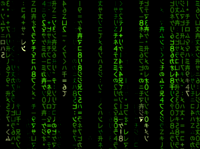Install Scala on Raspberry Pi
Posted in Linux, Programming, Scala on June 4th, 2015 by Pavel – 3 CommentsThis article shows how to install and use Scala programming language on Raspberry Pi.
Traditionally, the programming language of choice for Raspberry Pi was Python, while JVM-based languages were set aside. That was reasonable, because JVM platform is rather resource-intensive, especially in interpreted mode, and the first version of Raspberry Pi was hardly apt for such a task.
However, things have changed: on the one hand, Raspberry Pi 2 now offers a 900MHz quad-core CPU and 1GB of RAM, on the other hand, Oracle released JDK 8 for ARM (with HardFP, JIT and server VM), which provides >10X performance boost (comparing to Zero VM from OpenJDK), so Scala runs nicely even on Raspberry Pi 1 (and, RPi 2 can run IntelliJ IDEA, if you wish).
Contents:
Some of the commands will require root privileges, so either login as root user or use sudo to start an interactive shell via sudo -i.
Continue reading →



![Twitter's waterflow problem [2,5,1,2,3,4,7,7,6]](/images/twitter-waterflow-problem.png)



